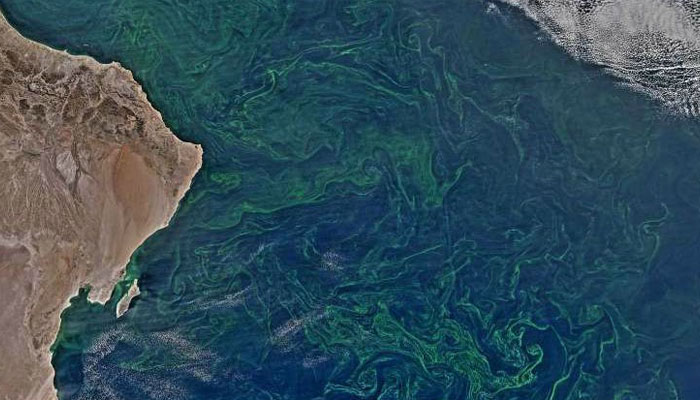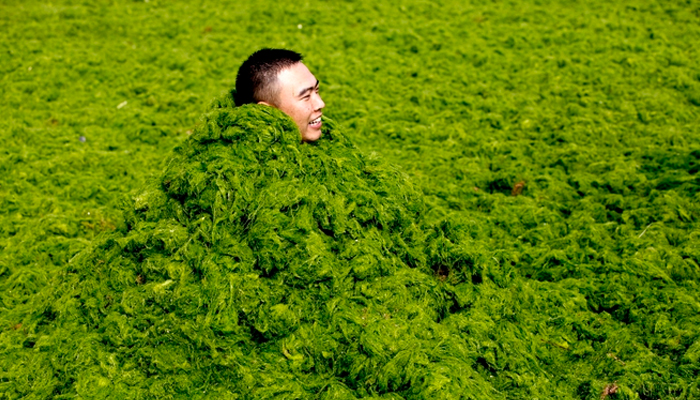A Mexico-sized algae bloom is threatening Pakistani coast
The sea sparkles suffocate aquatic creatures with the ammonia they release and have a horrible stench that can adversely impact local tourism industries
March 29, 2017
Sprouting from the Gulf of Oman, a thriving mixture of green slime has started to spread in the Arabian Sea, and is now inching towards the coasts of Pakistan and India.
Although the blossoming algae look pretty from afar – imitating the Mexican avocado-based dip guacamole – they suffocate marine life through ammonia they release. Moreover, they have a horrible stench that may have an adverse impact on the local tourism industries.

Image courtesy: Science Alert
The sudden appearance of these algae is triggered by ‘dinoflagellates’, which are “strange, tiny creatures that feed on plankton and suck up energy from the sun via microscopic algae living within their cells,” according to website Science Alert.
“It can change the flavour of the water. […] In extreme cases it can cause fish kills; it does it all over the world,” Lisa Gershwin – a Tasmania-based biologist – explained to the website.
Occurring on average at least twice a year, the sea sparkles can potentially affect almost 120 million people who are engaged in the fishing space. Even more concerning is the fact that these have been uncommon in the last decade, surfacing only recently.

(Image courtesy: The Wall Street Journal blog)
A researcher and microbiologist from Columbia University noted that “something dramatic has changed in the Arabian Sea.”
Possible factors that have contributed to this surge in algae are the decreasing level of oxygen due to pollutants discharged into the ocean as well as sewage. Furthermore, food producers called diatoms have started to fall in number while the sea sparkles grow.
This crucial – and for now, a detrimental – change in the ecosystem may lead to a change in the structure of marine life as well, “with more jellyfish and sea turtles, and less predatory fish,” the website explained.











